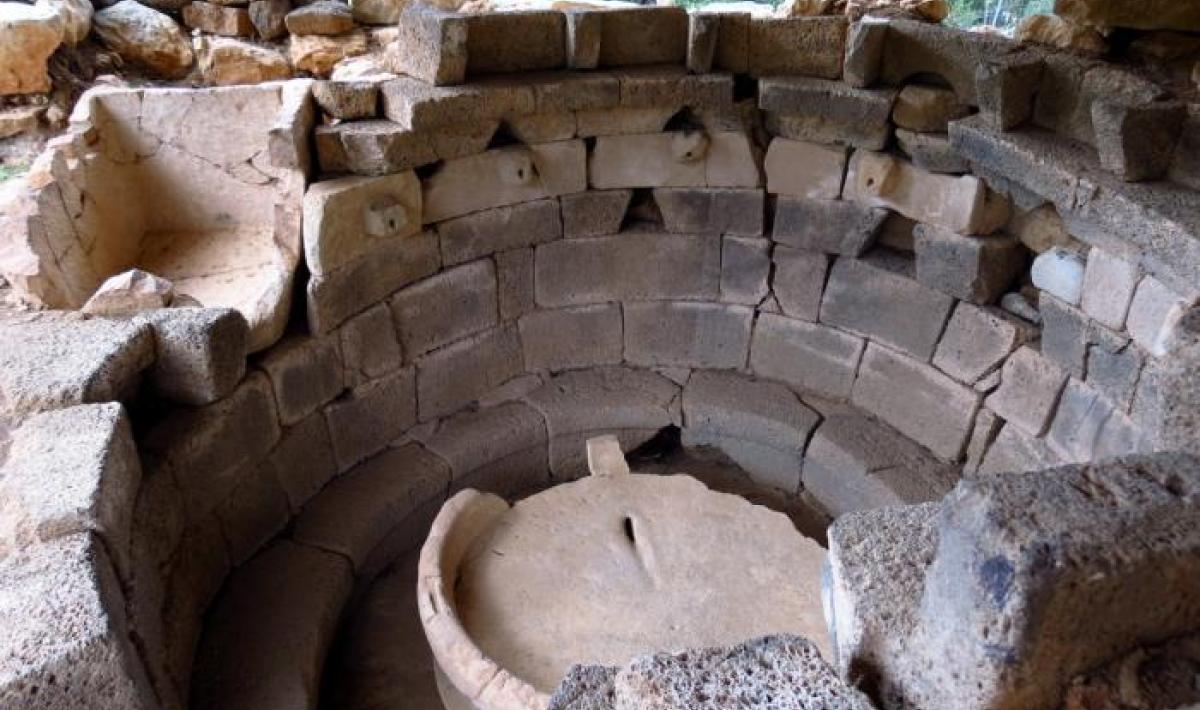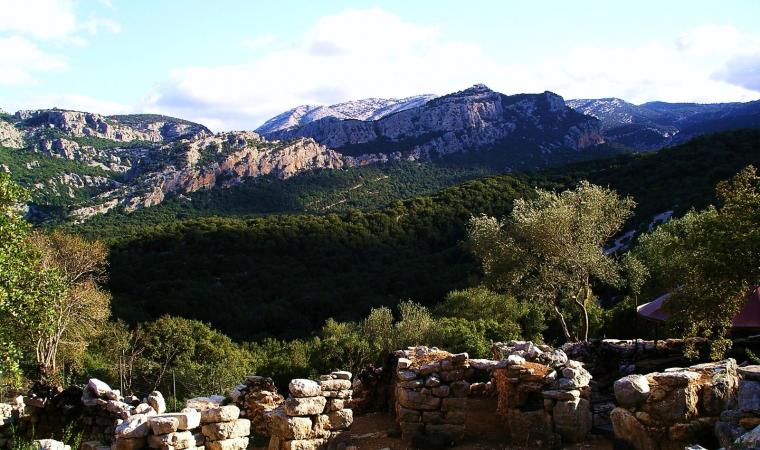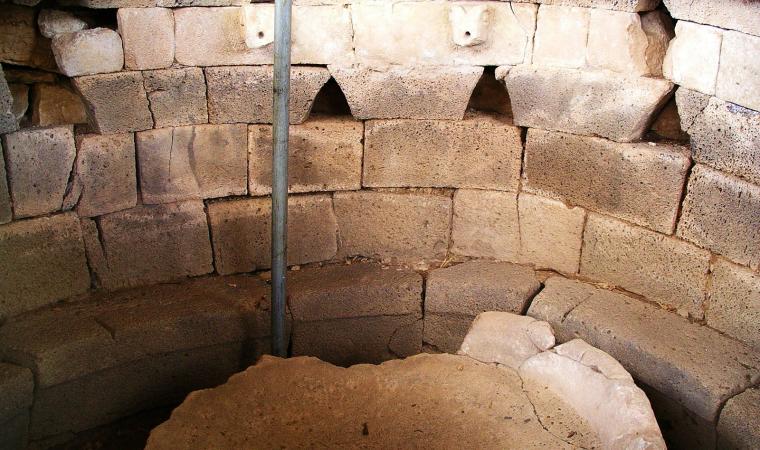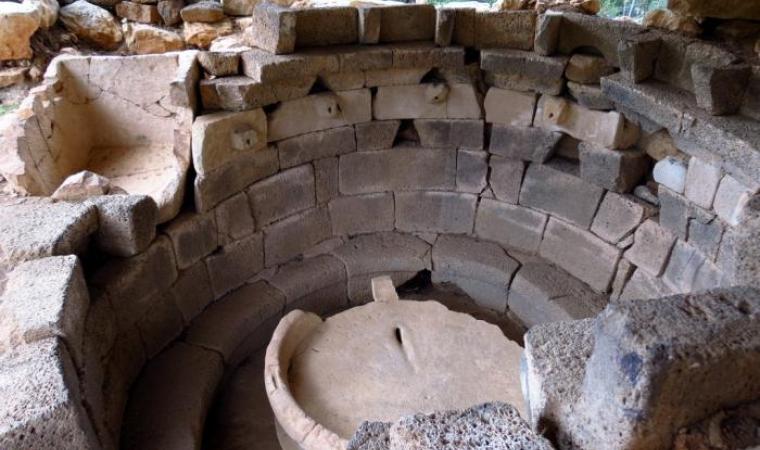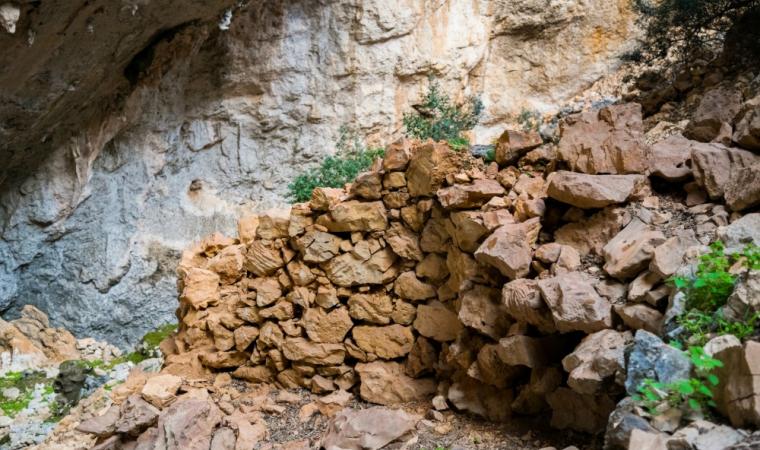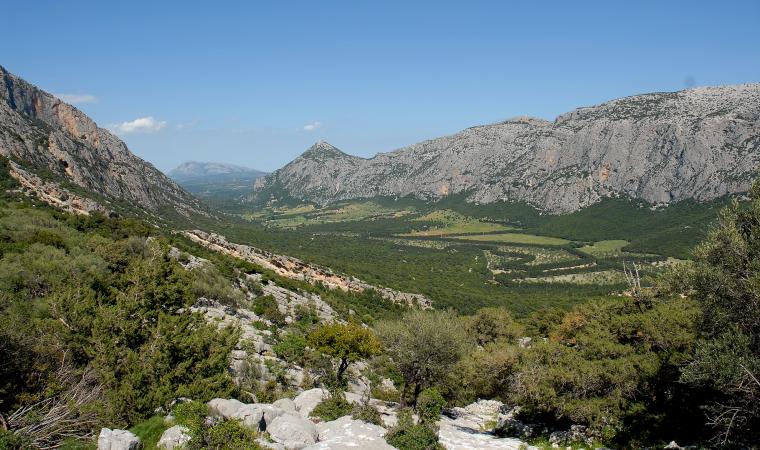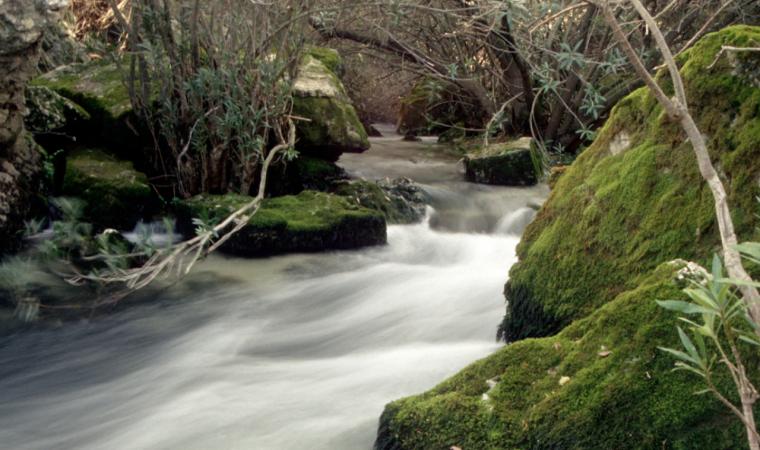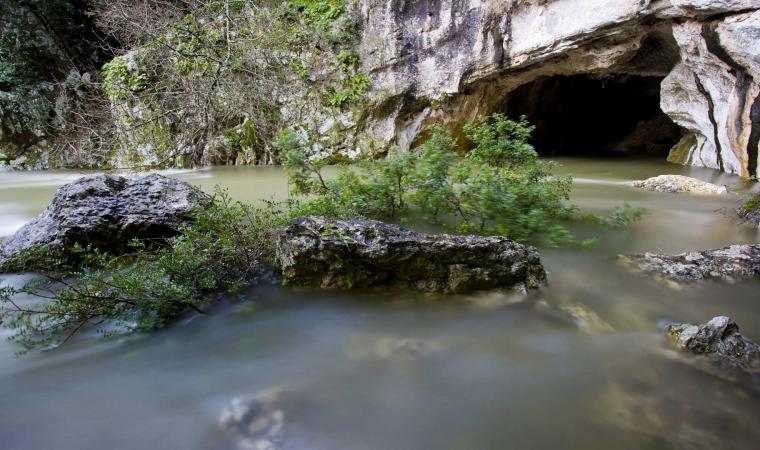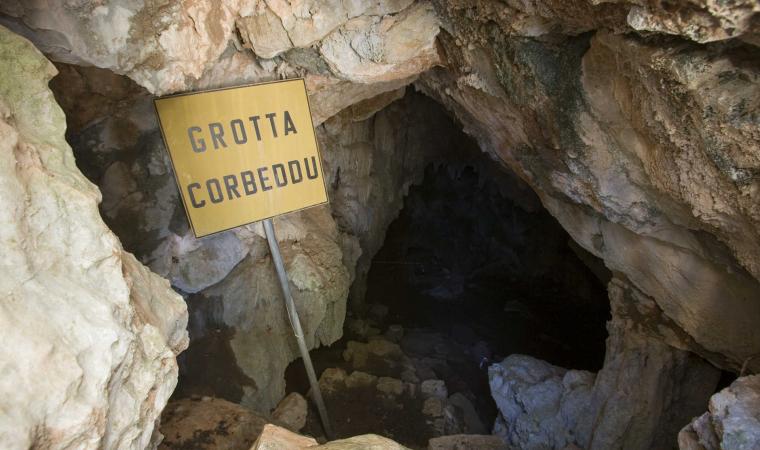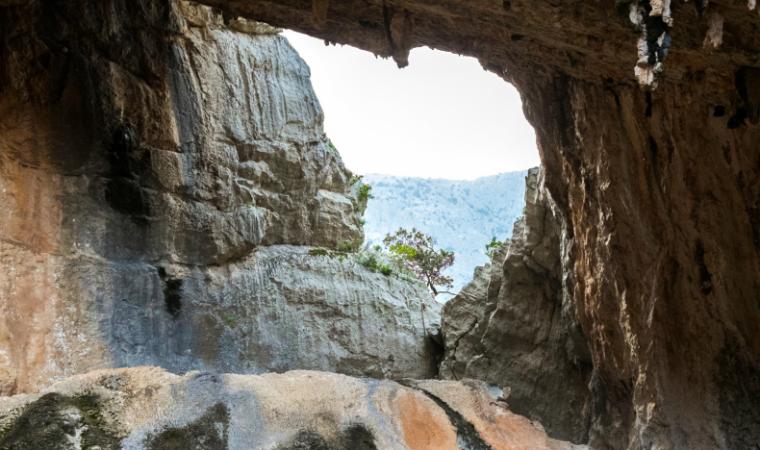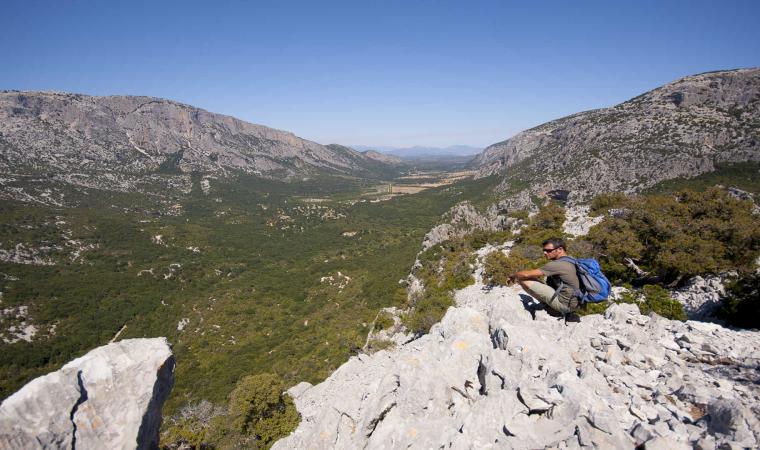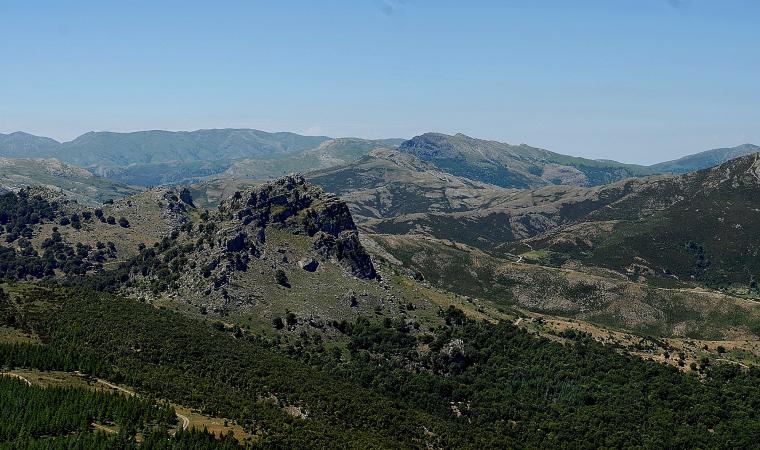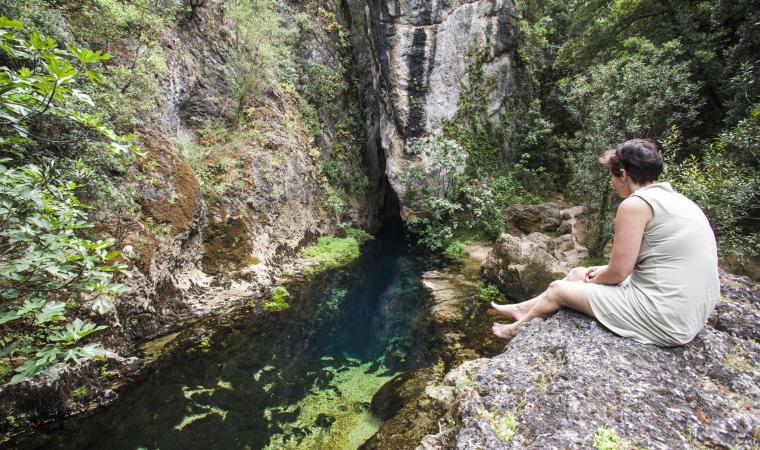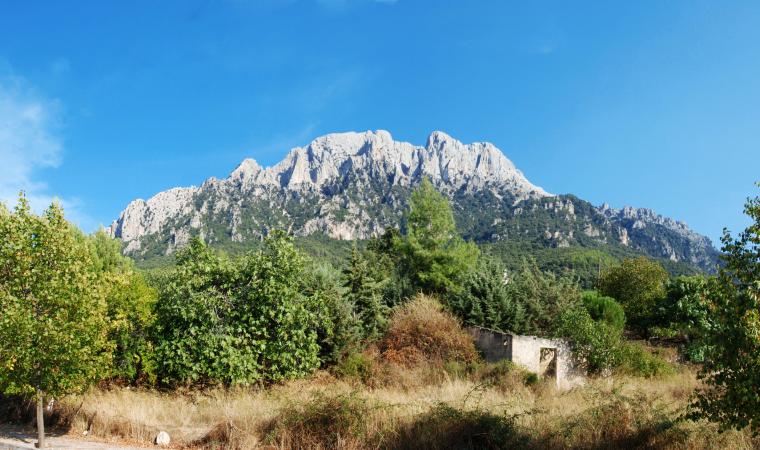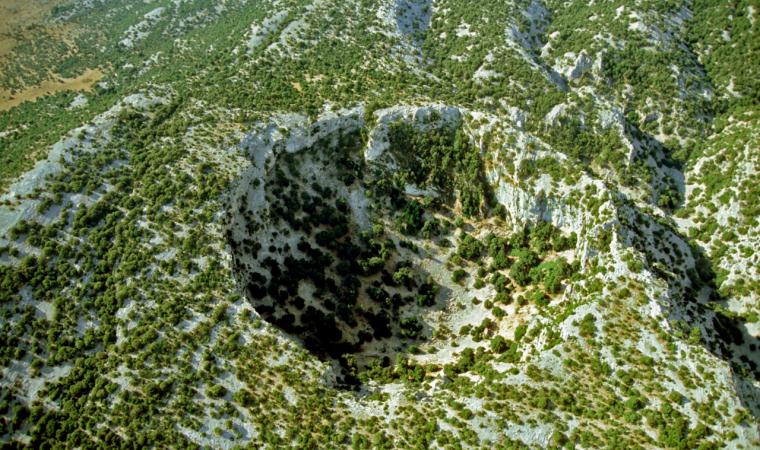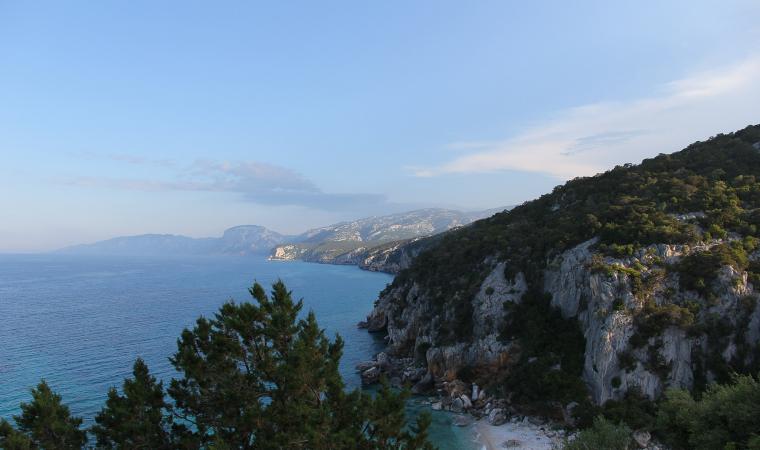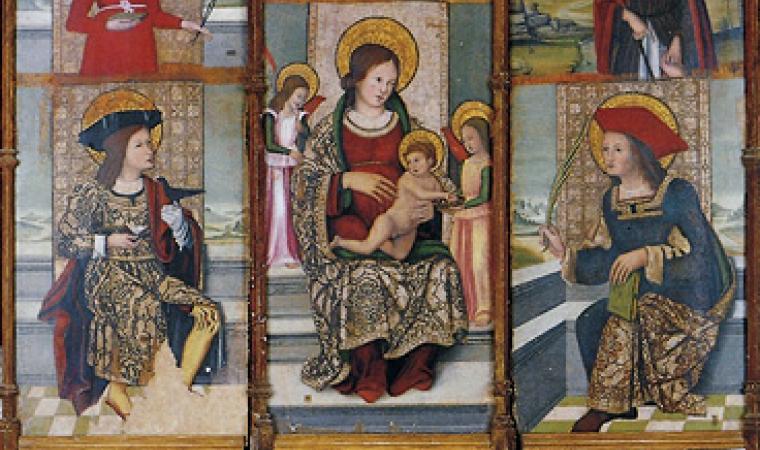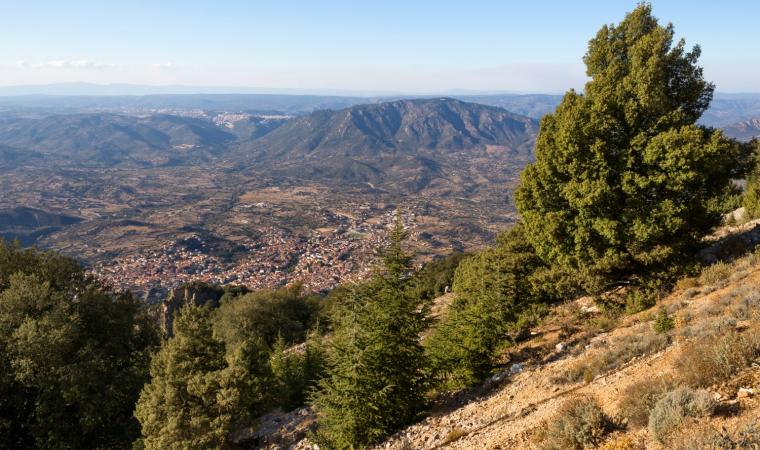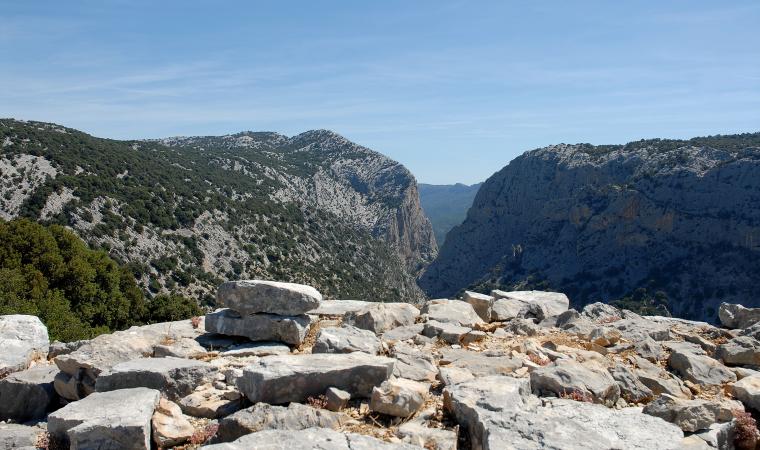The name literally means 'where the carts pass', and dates back to the charcoal collection activities that characterized the site in the nineteenth and twentieth centuries: it is the location of a nuragic complex of exceptional architecture and engineering, created at the time of metalworking and linked to the cult of water, a precious element in the arid calcareous environment of the Supramonte, the Sardinian 'dolomites'. The village of sa Sedda 'e sos Carros is set in the wild valley of Lanaittu, a spectacular natural background within the territory of Oliena, accessible from the road that also leads (going towards Dorgali) to the national monument of the karst spring on Gologone and beautiful caves of sa Oche and su Bentu.
It is an insula similar to many nuragic villages in the Barbagia area, that grew up without any close nuraghes. It lies on the left side of Lanaittu, on the steep outcrops of Mount Uddè, about 300 meters above sea level. It dates back to a period between the Late Bronze and early Iron Age (12th-9th century BC) and is particularly important due to the presence of traces of metals fusion in the Nuragic age - an era in which man learned to extract and forge metals (bronze and iron), leaving behind the finds found in the numerous circular and oval huts that make up the village. One dwelling stands out for its singular architecture and ritual function: it is the 'source', a circular space with internal walls in dual-tone squared blocks - of white limestone and dark basalt - and carefully worked flooring. On the walls are carved mouflon heads in high relief with a hole through which the water, which came from the canal built into the wall thickness, gushed into the monolithic basin in the center of the floor. Near the hut you will see a large circular structure with steps: this was the pool for ceremonial ablutions, religious rites that involved the use of sacred water. This structure changed its use over time, becoming a storeroom for bronze objects waiting for a new processing cycle. It is probable that there was a casting workshop near the village.
In addition to sa Sedda 'and sos Carros, the Lanaittu valley also holds another nuragic site, the most spectacular of the island: the village of Tiscali. The green valley, which will appear sunny and solitary once you pass over passu malu (the bad pass), was inhabited long before the Nuragic age: it was a favorable environment for settlement since the Upper Palaeolithic, as shown by the remains of the Corbeddu cave.

